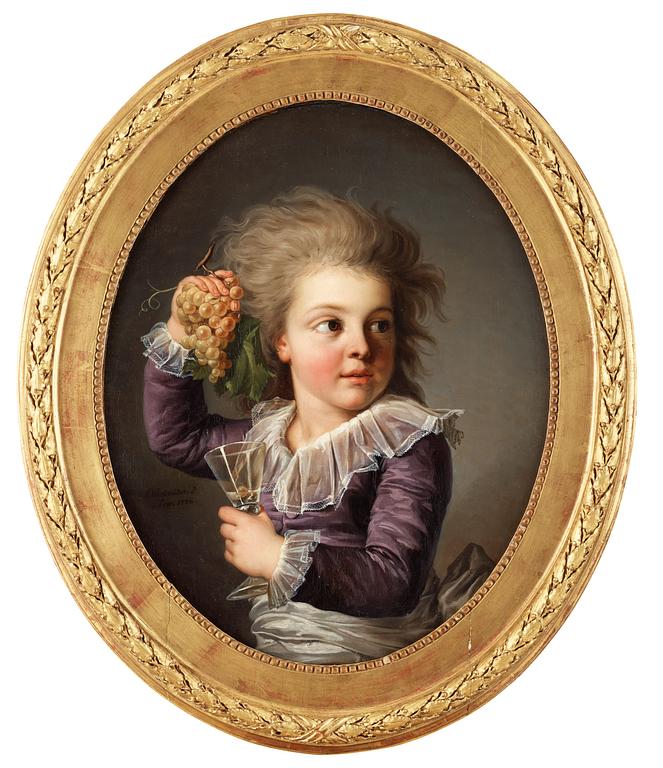Adolf Ulrik Wertmüller
Jules Charton" and his sister "Emelie Charton
A pair. Signed A:Wertmüller. S and dated á Lyon 1786. Canvas, oval, each 58 x 46 cm. Period gilded frames.
More information
Adolf Ulrik Wertmüller was born in 1751 in Stockholm but was mainly to work abroad during his lifetime. He began his artistic training by studying sculpture but was later introduced to painting and became a student of Lorens Pasch the Younger. At the age of twenty one he left Stockholm and traveled to Paris where he was welcomed by his older cousin, Alexander Roslin, who at that time had been active in the French capital in just over twenty years and gained great fame as one of the city's most valued portraitist. Very soon Wertmüller joined the Rococo period and the opposition direction, his new teacher was Joseph-Marie Vien, a leading figure in the nascent neo-classicism. 1775 Vien was appointed director of the French Academy in Rome and went to Italy accompanied by many disciples, including Wertmüller who took the opportunity to study the Roman forms in place.
Back in Paris, he was named by Gustav III, as first royal court painter, and he became a member of the newly founded Royal Academy of Art and also in the French equivalent.
The harsh climate in Europe and the intrigues within the professional circles, led Wertmüller to leave Paris in 1788 and travel to Bordeaux. With the outbreak of the Revolution Wertmüller lost most of his savings. He then decided to first travel to Spain and then on to the U.S. where he arrived 1794.
Everywhere he was well received and shortly after his arrival he was commissioned to paint the portrait that was to become his most famous work, the portrait of George Washington.
Wertmüllers artistry represents a transition from Rococo bright, delicate features to the more sober and polished classicism. Inspired by Vien and David, but also of American realism, Wertmüller worked with light and darkness to create the life and emotion of the more restrained classical paintings.
Wertmüller painted two portraits of Thomas Charton and his wife, Anne-Marie Charton, in December 1779. Thomas Charton was a wealthy art collector who introduced Wertmüller for his influential friends. On the back is a dedication that express Wertmüllers gratitude to the couple. These two portraits of the couple's children, dated 1781, provide us with further evidence of the artist's devotion to family Charton. The portrait of their son, Jules, portrays the boy with a bunch of grapes and a wine glass. Her daughter is in an apple - the fruit of wisdom. As the portraits are mentioned in Wertmüllers Note tous mes ouvrages finis to the paintings have been presented as a gift to the parents.
Although the artist's portraits are usually characterized by a certain cold wakes these two paintings radiate life. The young Charton is mischievously up the wine god, Bacchus (Dionysus), attributes wine vessel, and one cluster of grapes. His hair is tousled and he seems somewhat guiltily, turns our attention to someone standing beside the artist. His sister stroking an apple while she her eyes are lost in something that is hidden from the viewer. Besides being a symbol of wisdom is a link between the apple and the biblical fall. The details of the paintings so that the apple, glass and grapes are skillfully painted and also the material limits.







































